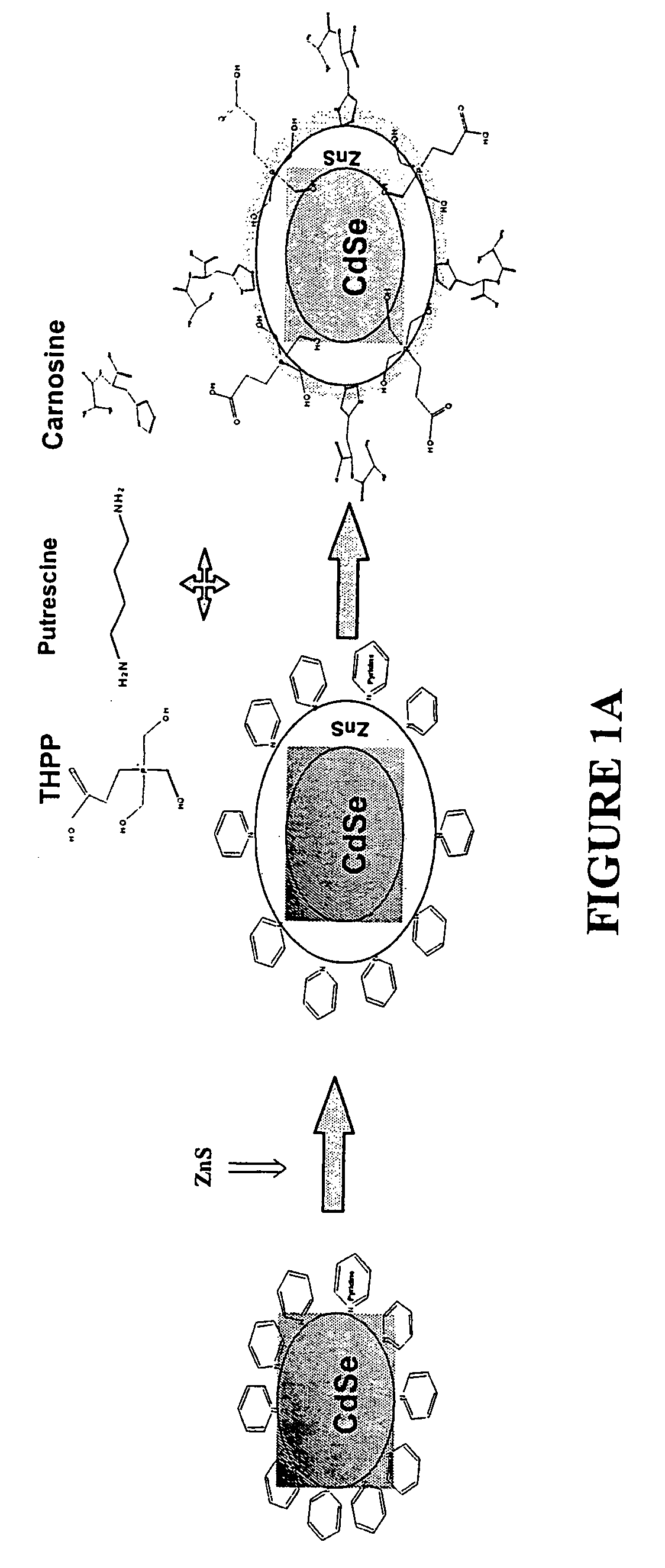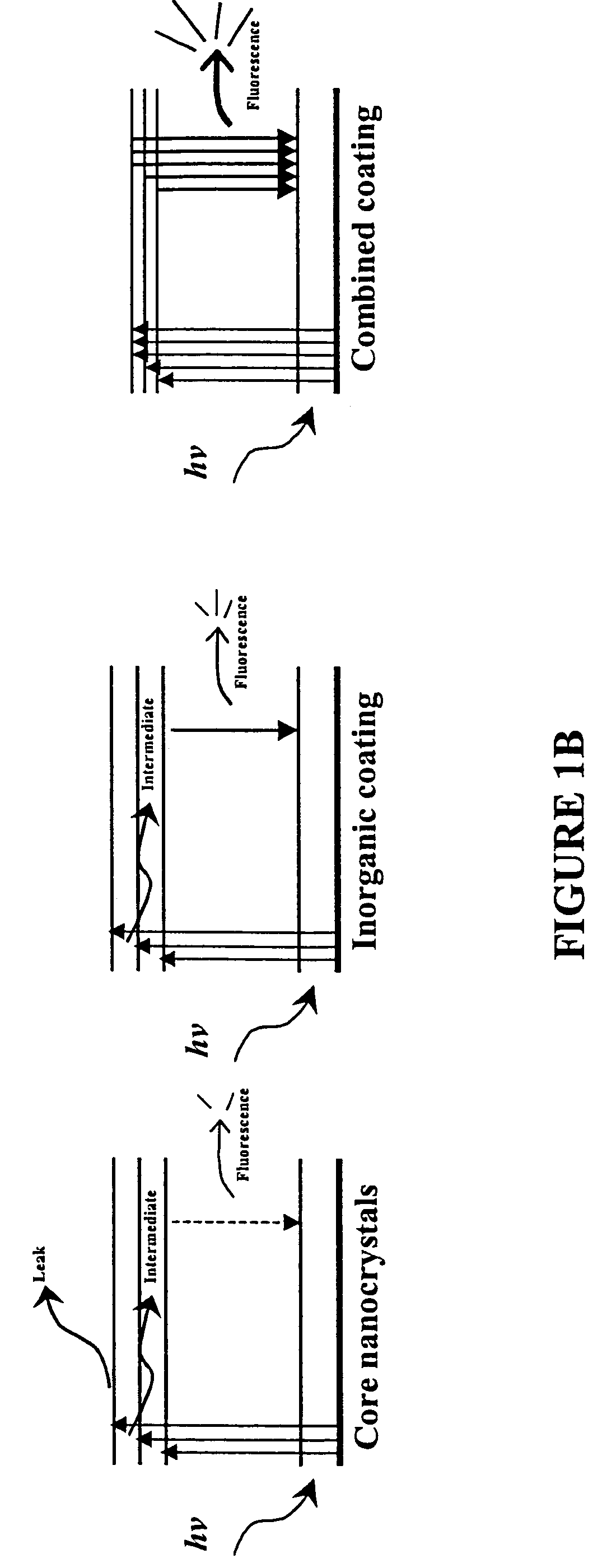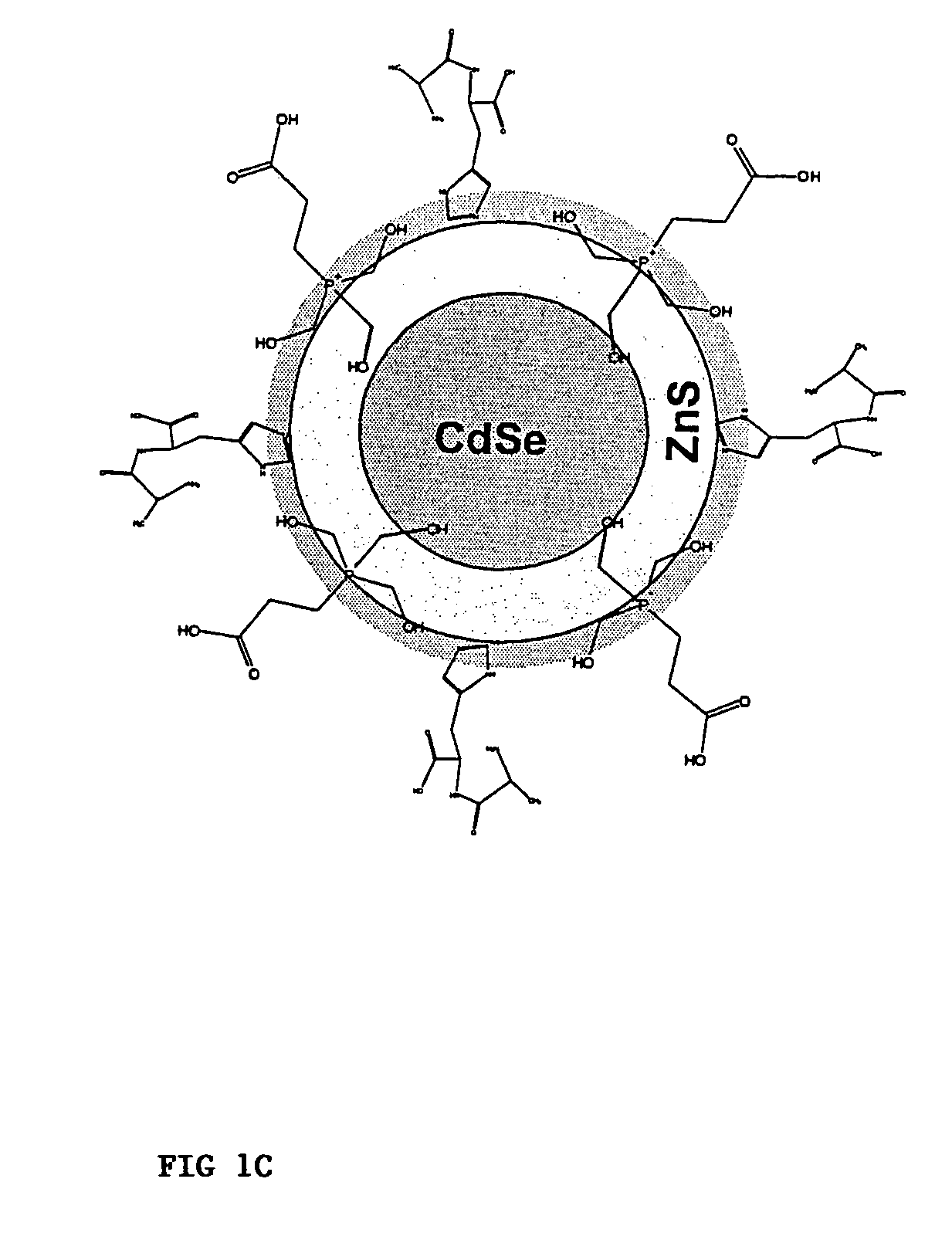Highly luminescent functionalized semiconductor nanocrystals for biological and physical applications
a functionalized semiconductor and nanocrystal technology, applied in the field of biological and physical applications, can solve the problems of overlapping or insufficient spectral spacing between the emission of different fluorescent molecules to permit individual and quantitative detection, hinder the accuracy of quantitative measurements using these molecules, and use these molecules separately or in combination. , to achieve the effect of increasing fluorescence efficiency and increasing fluorescence efficiency
- Summary
- Abstract
- Description
- Claims
- Application Information
AI Technical Summary
Benefits of technology
Problems solved by technology
Method used
Image
Examples
Embodiment Construction
[0028]Throughout the specification of the application, various terms are used such as “primary”, “secondary”, “first”, “second”, and the like. These terms are words of convenience in order to distinguish between different elements, and such terms are not intended to be limiting as to how the different elements may be utilized.
[0029]By the term “target molecule” is meant, for the purpose of the specification and claims to refer to a molecule of an organic or inorganic nature, the presence and / or quantity of which is being tested for; and which contains a molecular component (e.g., ligand or sequence or epitope or domain or portion or chemical group or reactive functionality or determinant, or the like) for which a molecular probe has binding specificity. The molecule may include, but is not limited to, a nucleic acid molecule, protein, glycoprotein, eukaryotic cell, prokaryotic cell, lipoprotein, peptide, carbohydrate, lipid, phospholipid, aminoglycans, chemical messenger, biological...
PUM
| Property | Measurement | Unit |
|---|---|---|
| surface energy | aaaaa | aaaaa |
| surface energy | aaaaa | aaaaa |
| pH | aaaaa | aaaaa |
Abstract
Description
Claims
Application Information
 Login to View More
Login to View More - R&D
- Intellectual Property
- Life Sciences
- Materials
- Tech Scout
- Unparalleled Data Quality
- Higher Quality Content
- 60% Fewer Hallucinations
Browse by: Latest US Patents, China's latest patents, Technical Efficacy Thesaurus, Application Domain, Technology Topic, Popular Technical Reports.
© 2025 PatSnap. All rights reserved.Legal|Privacy policy|Modern Slavery Act Transparency Statement|Sitemap|About US| Contact US: help@patsnap.com



